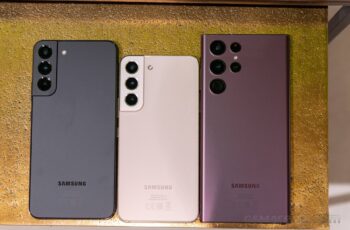
Samsung has made a lot of changes to the Galaxy Note 10+. First, it ditched the microSD slot. Second, it has less RAM. And third, it has a smaller screen. It also has a telephoto lens for portrait mode, but none of these changes is a deal-breaker. We’ve rounded up the pros and cons of this phone to help you decide if it is right for you.
Samsung ditched the microSD slot
The smaller Note 10 is getting rid of the microSD card slot, but the larger Note will still support expandable storage. The reason for removing the card slot is to reduce the weight and space of the phone. The smaller Note will have 256GB of built-in storage, and the larger Note 10+ will have 512 GB. The move follows in the footsteps of the iPhone. Apple’s smartphones never included a microSD card slot, and Samsung has deliberately opted to eliminate it.
This move could be the first sign of a trend toward internal storage, though Samsung’s move could be temporary. Some analysts predicted a future where all phones will be port-free. For now, many flagship devices will support a microSD card up to 256GB, although future phones might not support the card at all. However, experts recommend that you use the inbuilt memory instead of an external one. SD cards are not as reliable and faster and you can’t install apps.
It has less RAM
The Galaxy Note 10 has a hefty battery, more RAM, and more storage space than the standard Note 10. But does it justify the price difference? Note 10 also has a higher native resolution and a quad rear camera setup, making it a better choice for some users. While Note 10 costs more than its rival, the Plus is a worthy upgrade. And if you’re looking for a big display, the Note 10+ is a perfect choice.
In terms of performance, the Note 10+ is a worthy contender, but not by much. While it may not be as powerful as the Note 10+, the iPhone 11 Pro is more affordable and still packs a punch with its 4GB of RAM. It has less RAM than the Galaxy Note 10+, but its RAM is still significantly higher than the Note 10+. Its overall score is 462,098 compared to the Note 10+’s 342,766.
It has a smaller screen
Both the Note 10 and Note10+ are flagships, but the Galaxy Note has the edge. The Samsung Galaxy Note 10 is slim and compact, while the Note 10+ is a giant slab of glass that feels like an oversized Galaxy S10 5G. Both phones are good for watching movies, reading eBooks, and playing mobile games, but the Note 10+ is the better phone. Here are the pros and cons of the Galaxy Note 10.
The Samsung Galaxy Note 10+ is larger and heavier than the Note 10. It has a 5.2-inch display, which is slightly bigger than the Note 10+. But it still has a 60Hz refresh rate, so it’s perfect for video-watching. And, if you’re going to compare the two phones, keep in mind that Note 10 has a better camera system and a smaller screen.
It has a telephoto lens for portrait mode
The Samsung Note 10+ uses a telephoto lens for portrait mode. That’s a big change from the Live Focus settings on the Galaxy S10 and Galaxy S9, which use a wide-angle lens. The telephoto lens produces a much greater amount of blurring and background separation in your portraits. Here are some things you should know before you buy.
First, the camera. The iPhone XS Max’s camera has two different angles for portraits. The iPhone uses a wide-angle lens for portrait shots, while the Samsung Galaxy Note 10 Plus has a telephoto lens for portrait shots. This means the images you take will look much more natural than photos taken on the iPhone. The Note 10 Plus also offers Live Focus video, which gives you more options for taking photos in low-light conditions.
It has a wider field of view
A wide-angle lens has a wider field of view (FOV) than a normal lens, which requires you to use a shorter distance for proper focusing. Fox is also referred to as the angle of view and can be determined by two different methods: linear and angular. A linear FOV is more than twice as wide as an angular one. This difference means that you can capture more of a scene than with a normal-angle lens.
A 50mm lens with an APS-C or DX sensor has a horizontal FOV of 26.3 degrees, a 17.7-degree horizontal FOV, and a 31.4-degree diagonal FOV. Note that these numbers may vary slightly from camera to camera as not all manufacturers use the same-size sensor. The diagonal FOV is measured from one corner of the frame to the other. A super-wide fisheye lens has a 180-degree FOV, but that’s a result of plenty of distortion.

